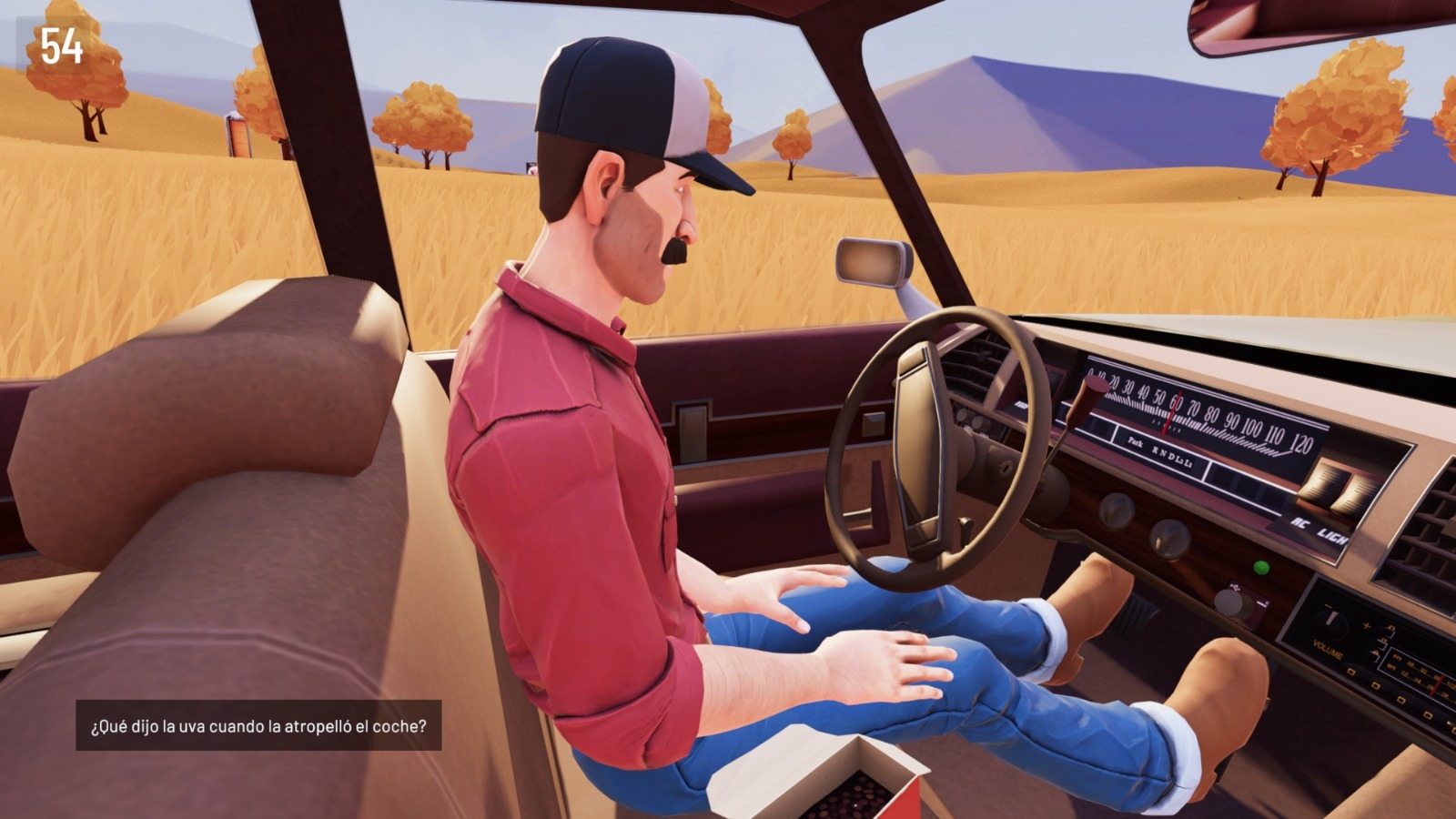Hitchikker – A mystery game It is a narrative title that proves neo-baroque as the artistic style of our time. The story puts us on a road trip in the shoes of a hitchhiker with amnesia. We are the co-pilots of some very strange and mysterious drivers. During this road trip, our protagonist does not know who he is or how he ultimately traveled, but little by little the characters they meet reveal information to him. Based on these clues, we need to assemble the pieces that we get through dialogue to find out the identity of the main character and what happened to his girlfriend.
The game dynamics are based on watching, interacting with the dialogues and playing small mini-games that unlock clues as to who you are with different animated styles. We meet a driver who has a picture of you and your girlfriend in the glove compartment, secrets on the radio, a man creepy with Diogenes Syndrome occurring in a residential area, a waitress who messes our heads, “zombies” taped on a cell phone that appears and disappears in a cafeteria, a kidnapper who speaks your language only when They insist and tell you great things, extreme coincidentally and in the end without w anting to do it spoiler
It must be remembered that it is one Narrative game and that its richness is to be found in the details that are present in its dialogues and in the environment as the plot moves through the characters and in interacting with them and the environment. There are expandable snippets that are a blast. If you think it will be an action packed game, you will be disappointed. On the other hand, if you play it due to the fact that they tell you an interactive story, relax and enjoy it, it will surely look like a good game.
On top of that, not only is it a good game, but it also reflects how video games represent the continuity of art and communication history.
Neo-Baroque narratives hypertextual
Hitchhiking is in first person most of the time. We experience a coexistence of styles and the eye can hardly find a point on the screen without information. Hence, we categorize history as Baroque, a style that can be found in countless current games and films. We can interact with many elements of the car we are in, enjoy the scenery and most importantly, chat with the five drivers who show us the way.
Baroque is a polysemic category that defines works from all artistic disciplines. Not viewing video games as an extension of literature, sculpture, painting, and cinema is a stratospheric mistake. In Hitchhiker, you can see the above at different depths.
Hitchhiker tells a story through a specific vision from the author, the developer, using wit, insight, and wit to understand what is being revealed and shaping the established norms to tell the interactive story of Hitchhiker. The different styles with which the story is exposed, such as engraving or minimalist animation, show this charge in a way that creates the end result.
The game Hitchhiker also reflects hypertextuality as a feature of current communication. All breaking news is hypertext because it is linked to news from other texts. that seems superfluous, but it is not. The above becomes apparent in the game at a glance: The Hitchhiker’s Guide has various literary references and we can even see “physical” volumes of poetry or mentions of famous authors and works in literary history. We could stop analyzing all the narrative references, but these relationships between texts are ultimately a relatively close pact between the author and the work.
Structure of Hitchhiker’s interactive narrative
We stand in front of one hidden story with two levels exposed in an interactive narrative of one Vector frame with branches Ö Fishbone. For those wondering “what the hell?” I made graphics because I think it’s very cool to explain interactive narration. It’s worth noting that the two graphics are indicative and don’t exactly follow the elements of the video game, as I have hours to faithfully reproduce all of the hitchhicker information in the structures they are made up of.
First of all, it should be noted that, as stated earlier, the Lore The main thing about Hitchhiker is that you need to know who you are and what happened to you. The graphic below shows the main structure that these types of narratives follow: that of the hidden story. The black knots are the timing that you need to clear or guess with the clues they give you, the white knot.
In the background we can see the hidden story of Hitchhiker being exposed with the vector structure with twigs or herringbone pattern. The rides you take with each driver are small chronological episodes, and the dialogues you have with them contain the extra information or material that the structure allows for. Those of you who have played twisted narrative or timeline titles like Detroit: Become Human or AI: The Somnium Files will be familiar with these schematics.
In conclusion, if I have highlighted all these aspects, it is because I have a feeling that there are many people who start out with storytelling because they are bored. And maybe I’m stranger than a green dog, but I find them exciting and I love being able to explain them from theory.
What can certainly be boring about these works is not the game itself, but the structures and forms from which the story emerges. In this case, you may love hitchhikers if you like this type of game or if it can perfectly bore you. Indeed, one of the features of the structure from which the story emerges is the loss of interest.
So the next time you find a storytelling game boring, hopefully you’ll be wondering if you’re bored of the genre, style, story, or interactivity its structure evokes. I liked Hitchhiker even though it was a bit long and I don’t want to tell you about the result.
Have you tried out the Amnesiac The Hitchhiker’s Guide? Would you like to comment on storytelling games? Comment what you want!














